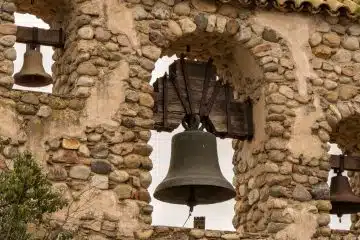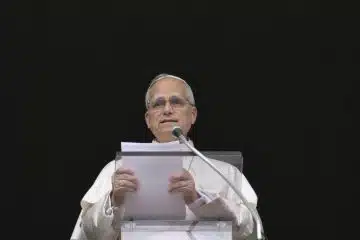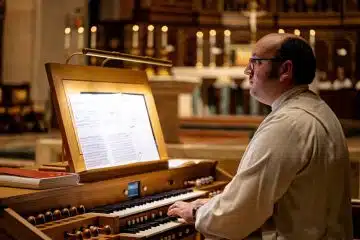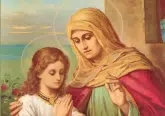The Church and Slavery

I have read that some Catholic religious orders enslaved people. How did the Church respond to slavery?
The Church, like most American institutions that existed in the antebellum period (the years in American history after the War of 1812 but before the Civil War in 1861), was a participant in the inhuman institution of slavery. Religious orders—of both men and women—enslaved other human beings, and this was often accepted uncritically. However, some priests and sisters opposed slavery and resisted their community’s involvement.
ANTISLAVERY POPES
Historically, slavery was viewed as potentially but not necessarily sinful (if enslaved persons were not “mistreated”). After all, many Christians reasoned, slavery could be found in the Bible and was widely practiced in the ancient world. The Church failed for much of its history to clearly condemn it. However, as the Church’s teachings on slavery evolved, chiefly in the 19th century, it became more critical of the significant abuse experienced by enslaved persons and the disruption to marriage and family life that ensued.
Pope Paul III issued Sublimis Deus in 1537, declaring that enslaved persons had immortal souls and should not be held in bondage. His exhortation, as one might expect, was little heeded. In 1839, Pope Gregory XVI wrote strongly against the slave trade, admonishing as “un-Christian” those who would claim other humans as slaves and trade them for profit. Because the U.S. had ended the transatlantic slave trade in 1808, most American slaveholders viewed the pope’s teaching as not applying to them. Very few Catholic enslavers emancipated the enslaved.
CONFLICTING APPROACHES
As religious orders became established in the U.S., many relied on enslaved labor, especially in the frontier regions. The Jesuits, Vincentians, Dominicans, Ursulines and Sisters of Charity, among others, utilized enslaved labor, mainly in agricultural or domestic tasks. While it was long believed that persons enslaved by the Church fared better than those enslaved by others, slavery still retained its essential inhumanity.
Church teaching emphasized the importance of baptizing enslaved persons and teaching them the Catholic faith’s basics. Still, few enslavers allowed their slaves to regularly attend Mass, marry in the Church or receive Last Rites. They acknowledged their humanity but did not grant them equal access to the Church’s sacramental and communal life.
While slavery existed primarily in the U.S. South, those in the North did not necessarily oppose it. Only a small number of Catholics identified with the emancipation movement, partly because most abolitionists were virulently anti-Catholic. Also, most Northern Catholics, especially Irish and German immigrants, supported slavery’s continuation out of fear that if slaves were freed, they would offer economic competition.
MEMORY AND RECONCILIATION
In recent years, religious orders that enslaved persons before the Civil War have initiated efforts to memorialize those who were enslaved, repent for the sin of slavery and reconcile with descendants. Several religious communities have dedicated monuments to the enslaved, held prayer and reconciliation services and organized reunions with family members of enslaved persons. And while uncommon, there have been attempts to fund scholarships or community-based projects to assist the descendants of those enslaved by U.S. religious. Slavery has been called America’s “original sin.” Involvement in slavery is a sad chapter in the Church’s history, too. That people of faith, including bishops, priests and sisters, did not do more to end slavery shows that factors, including economics and politics, often overshadowed the Gospel message and concern for human dignity. Now, over 150 years after slavery’s abolition, efforts to eradicate racism and reconcile with those harmed by this cruel practice remain unfinished.
 Fr. David Endres is professor of Church history and historical theology at Mount St. Mary’s Seminary & School of Theology.
Fr. David Endres is professor of Church history and historical theology at Mount St. Mary’s Seminary & School of Theology.
This article appeared in the November 2024 edition of The Catholic Telegraph Magazine. For your complimentary subscription, click here.













